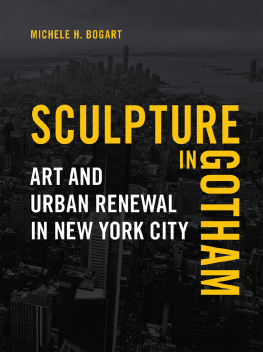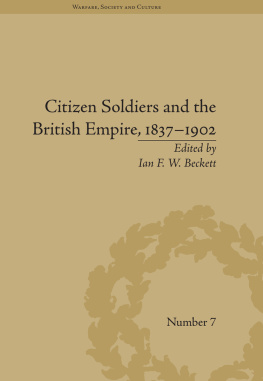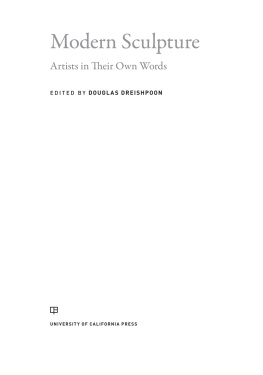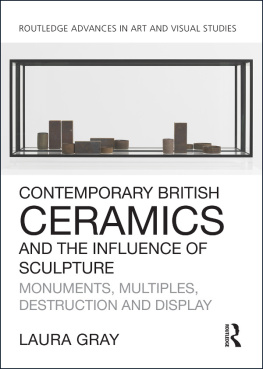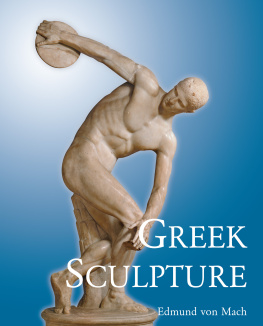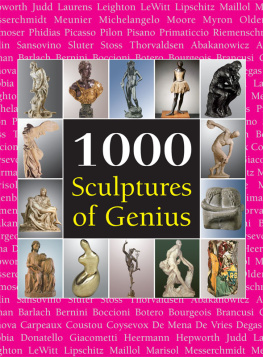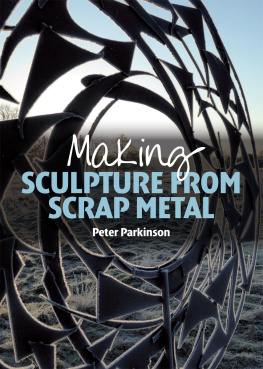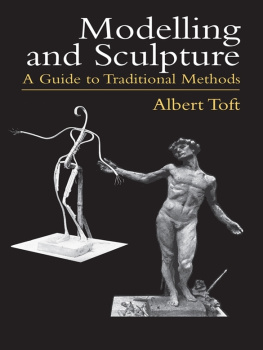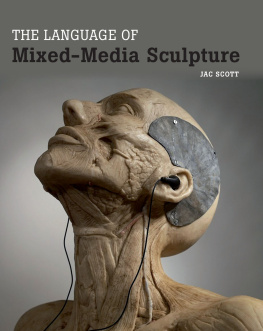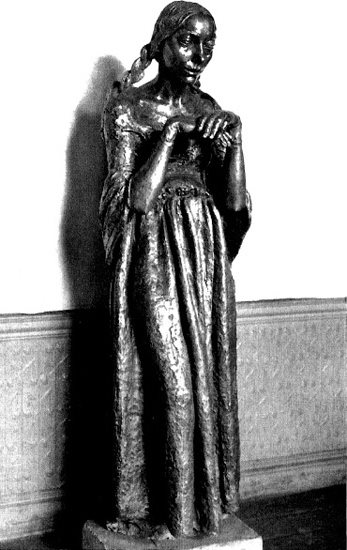
THE VISITATION
LET THERE BE
SCULPTURE
by Jacob Epstein
ACKNOWLEDGMENTS
FOR permission to quote from letters and articles published in numerous newspapers and periodicals, I wish to acknowledge my gratitude both to the publishers and, in the case of signed articles and letters, to the authors. My thanks are due to: the Birmingham Mail, the British Medical Journal, the Catholic Times, the Daily Express, the Daily Mail, the Daily Telegraph, the Evening Standard (including an article from the Pall Mall Gazette, now amalgamated with the Evening Standard), the Manchester Guardian, the Nation, Neptune, the New Age, the New English Weekly, the News Chronicle, the New Statesman, the New York Evening Post, the Observer, Picture Post, Reynoldss Illustrated Weekly, the Spectator, the Star, the Sunday Dispatch, the Sunday Pictorial, the Sunday Times, the London Times, Truth, the Universe; and to William Heinemann, Ltd., for permission to quote from Ibsens When We Dead Awaken.
Also to the following people, who have given their personal permission to quote their words from the sources mentioned above: L. B. Powell, Professor D. S. MacColl, Sir Muirhead Bone, Holbrook Jackson, Mary Borden, Pierre Jeannerat, Sir Eric Maclagan, Richard Sickert, Sir Kenneth Clark, G. F. Hill, H. S. Goodhart-Rendel, J. B. Manson, T. W. Earp, Sir Edwin Lutyens, R. R. Tatlock, Sir Charles Allom, W. H. Coate, Sir Charles Holden, James Bone, Sir Reginald Blomfield, Charles Marriott (article in the Outlook), J. Middleton Murry, Sander Pierron, Hugh Gordon Porteus, William McCance, Raymond Mortimer, Jan Gordon, R. H. Wilenski, Bernard Shaw, H. G. Wells, Sir John Lavery, Ezra Pound (article in the Egoist), Rev. Albert Belden, Antony Blunt, Rev. L. Weatherhead, John Macadam, Rev. Edward Shillito, Lawrence Binyon, Sir George Hill, Robert Jessel, and John Gibbons.
CONTENTS
ILLUSTRATIONS
LET THERE BE SCULPTURE
CHAPTER ONE
New York
(1880-1902)
MY earliest recollections are of the teeming East Side where I was born.
This Hester Street and its surrounding streets were the most densely populated of any city on earth; and looking back at it, I realize what I owe to its unique and crowded humanity. Its swarms of Russians, Poles, Italians, Greeks, and Chinese lived as much in the streets as in the crowded tenements; and the sights, sounds, and smells had the vividness and sharp impact of an Oriental city.
From one end to the other Hester Street was an open-air market. The streets were lined with pushcarts and peddlers, and the crowd that packed the sidewalk and roadway compelled one to move slowly.
As a child I had a serious illness that lasted for two years or more. I have vague recollections of this illness and of my being carried about a great deal. I was known as the sick one. Whether this illness gave me a twist away from ordinary paths, I dont know; but it is possible. Sometimes my parents wondered at my being different from the other children, and would twit me about my lack of interest in a great many matters which perhaps I should have been interested in, but just wasnt. I have never found out that there was in my family an artist or anyone interested in the arts or sciences, and I have never been sufficiently interested in my family tree to bother. My father and mother had come to America on one of those great waves of immigration that followed persecution and pogroms in Czarist Russia and Poland. They had prospered, and I can recall that we had Polish Christian servants who still retained peasant habits, speaking no English, wearing kerchiefs, and going about on bare feet. These servants remained with us until my brother Louis, my older brother, began to grow up; and then with the sudden dismissal of the Polish girls, I began to have an inkling of sexual complications. My elder sister, Ida, was a handsome, full-bosomed girl, a brunette; and I can recall a constant coming and going of relatives and their numerous children. This family life I did not share. My reading and drawing drew me away from the ordinary interests, and I lived a great deal in the world of imagination, feeding upon any book that fell into my hands. When I had got hold of a really thick book like Hugos Les Misrables I was happy, and would go off into a corner to devour it.
I cannot recall a period when I did not draw; and at school the studies that were distasteful to me, mathematics and grammar, were retarded by the indulgence of teachers who were proud of my drawing faculties, and passed over my neglect of uncongenial subjects. Literature and history interested me immensely, and whatever was graphic attracted my attention. Later, I went to the Art Students League uptown and drew from models and painted a little, but my main studies remained in this quarter where I was born and brought up. When my parents moved to a more respectable and duller part of the city, it held no interest whatever for me. I hired a room in Hester Street in a wooden, ramshackle building that seemed to date back at least a hundred years and, from my window overlooking the market, made drawings daily. I could look down upon the moving mass below and watch them making purchases, bartering, and gossiping. Opposite stood carpenters, washerwomen, and day workers, gathered with their tools in readiness to be hired. Every type could be found here, and for the purpose of drawing I would follow a character until his appearance was sufficiently impressed on my mind for me to make a drawing. A character who interested me particularly was a tall, lean, bearded young man, with the ascetic face of a religious fanatic, who wandered through the streets lost in a profound melancholy. His hair grew to his shoulders, and upon this was perched an old bowler hat. He carried a box in one hand, and as he passed the pushcarts, the vendors would put food into his box, here an apple, there a herring. He was a holy man, and I followed him into synagogues, where he brooded and spent his nights and days.
On one occasion I was taken to see the Chief Rabbi, a man of great piety who had been brought from Poland to act as the Chief Rabbi; but, as New York Jews do not acknowledge a central authority, he never attained this position. An attempt to use him to monopolize the Kosher meat industry was indignantly rejected. This sage and holy man lived exactly as he would in a Polish city, with young disciples, in ringlets (payes), who attended him as he was very infirm, lifting him into his chair and out of it, and solicitous of his every movement. The patriarchal simplicity of this house much impressed me. The New York Ghetto at that time was a city transplanted from Poland. Parallel with all this was the world of the intelligentsia, the students, journalists, scholars, advanced people, socialists, anarchists, free thinkers, and even free lovers. Newspapers in Yiddish, Yiddish theaters, literary societies, clubs of all kinds for educational purposes, night classes abounded; and I helped organize an exhibition of paintings and drawings by young men of the quarter. There existed a sort of industry in enlarging and coloring photographs, working them up in crayon; and there were shops that did a thriving trade in this. I had student friends who, to earn money, put their hands to this hateful work, and by industry could earn enough to go on with more serious studies. I never had to do this, as I could always sell my drawings.
Next page

